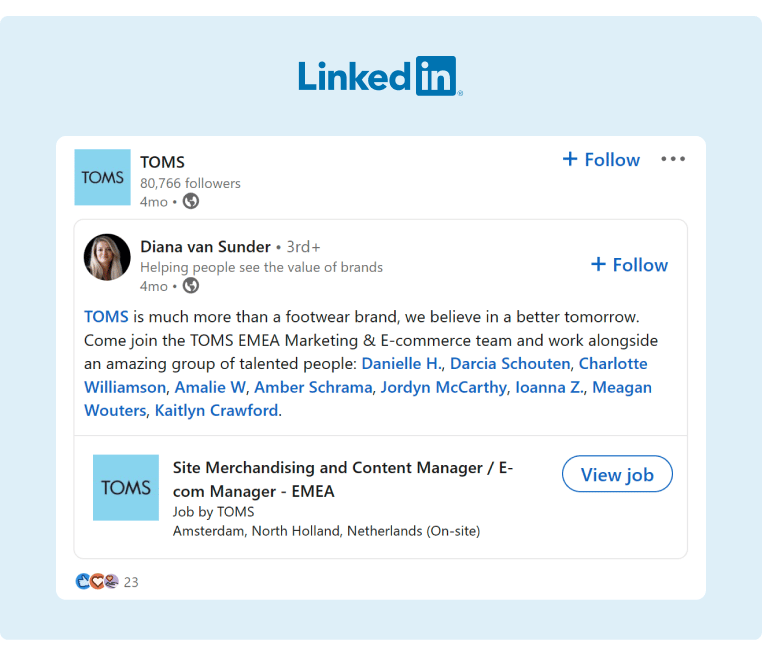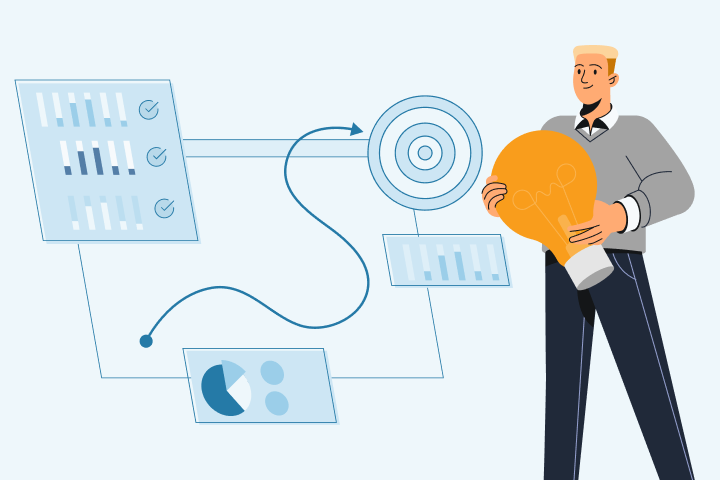The Value of an Employee Advocacy Platform
Using an employee advocacy platform can be a game changer for a company’s digital marketing strategy. By engaging the company’s employees as brand ambassadors, not only does it amplify a company’s reach, trust, and engagement, but it can also provide valuable data insights to help create a more effective marketing strategy.
If your brand isn’t already taking advantage of employee advocacy on social media, you’re missing out. Employee advocacy statistics show 98% of employees use at least one social media platform for personal use, and 50% are already posting about the company. When content is shared by employees, it receives 8x more engagement than content shared by the company. Need an even more compelling reason? Leads developed through employee advocacy convert 7x more frequently than other leads.
Companies looking for a competitive edge need to invest in employee advocacy platforms. By crafting a strong employee advocacy program and choosing the right employee advocacy platform, they’ll reap the rewards.
Interested in launching an employee advocacy platform, but not sure where to start? We’re here to help! In this article, we’re going to give you some useful tips for creating an employee advocacy program, what to look for when choosing an employee advocacy platform, highlight the benefits of employee advocacy, plus review some employee advocacy examples.
Ready to invest in an employee advocacy platform? Let’s get started with employee advocacy best practices.
Employee Advocacy Best Practices
While it may be tempting to immediately start shopping for an employee advocacy platform, don’t. First, you need to create an employee advocacy strategy. This strategy needs to include defining clear objectives, selecting key employees, choosing relevant social channels, creating a content roadmap, and success metrics before selecting employee advocacy software.
Next, you need to develop a plan for how your company will implement its employee advocacy platform. Here are five employee advocacy best practices:
1. Build a Positive Workplace Culture
Getting employee buy-in for your advocacy program starts with building a positive workplace culture. Focus on creating a workplace where your employees feel supported, valued, and heard. When employees feel good about their jobs and the work that they do, they’ll be more willing to advocate for the company.
2. Create a Training Program
Part of onboarding your employees as advocates will require a comprehensive training program. The type of employee advocacy training will depend on the department that you’re training. For example, the sales team will need to know how social selling helps them build connections, attract new leads, and nurture those leads. Meanwhile, Human Resources (HR) will use social media platforms for their talent acquisition efforts.
You’ll also want to include guidelines on what employees can (and cannot) share on social media (e.g., no confidential company information or inappropriate language). Consider creating a personal branding guide for employees, too, as a reference tool plus provide tips on how to optimize employees’ social profiles.
3. Incentivize Employees To Participate
Employee advocacy gamification is a tactic to incentivize your employees to participate. By assigning points to each social media activity that you request, employees can earn points that can later be “cashed in” for prizes. Prizes can include gift cards, additional PTO, money, etc.
4. Set Goals and Track Progress
Setting goals and tracking progress will help you measure the success of your employee advocacy strategy. To calculate your employee advocacy ROI, measure these metrics:
- Employee Earned Media Value (EEMV).
- Cost per click.
- Reach.
- Engagement.
- Clicks.
An employee advocacy tool can help you measure these metrics, which brings us to…
5. Use Employee Advocacy Tools
Using an employee advocacy tool can streamline your employee advocacy program. It will make it easier and more efficient to get your employees active on social media plus provide detailed analytics to measure the success of your program.
By following these employee advocacy best practices, you’ll be setting your company up for a strong, positive social media presence. In turn, you’ll be increasing your brand reach and engagement, and ultimately, your revenue, too.
Now let’s take a look at some employee advocacy examples and how a platform like GaggleAMP can help strengthen your employee advocacy strategy.
Employee Advocacy Examples
An employee advocacy platform can help facilitate a robust employee advocacy strategy, including employee branding. Let’s take a look at how employee branding plays a pivotal role in employee advocacy.
Effective employee advocacy relies on your employees' willingness to be brand ambassadors. Employee branding is a powerful tool for creating these genuine, influential brand advocates.
Here’s how employee branding works: the company trains and motivates its employees to promote the company. It ensures that the image of its employees aligns with its employer branding.
A great example of employee branding (and advocacy) is the brand TOMS. The global retail apparel and fashion company is in the business of improving lives, and that positive mission statement is interwoven into every branded post.
In this example, a TOMS’ employee posts on LinkedIn to recruit new talent, which the company then later reposts:

Source: TOMS
In addition to using employees as brand ambassadors, thought leadership is another tactic companies are using to connect with their audiences and build trust. For example, Magna5 empowers its employees to be thought leaders on social media by using an employee advocacy tool to publish content and engage with it.
With employee advocacy platform GaggleAMP, the company drove 8% of the company’s total sales pipeline, organically increased reach by over 7.1 million, and grew the brand’s LinkedIn followers by 42%. And that’s not all: employees gained over 4,600 connections, too. These statistics show the magic (and power) of a strong employee advocacy program when it's paired with the right employee advocacy platform.
TOMS and Magna5 are just a couple of the many employee advocacy examples out there.
Social media employee advocacy tools can help create (and maintain) that branded alignment (like TOMS) between your employees and your company. It can also boost your company’s social media presence and brand reach by publishing thought leadership content on your employee’s social accounts (like Magna5).
For example, GaggleAMP’s employee advocacy tool enables your company’s employees to share assigned engagement activities on their social media platforms. Since your company is assigning (and reviewing the content), you know that the messaging will align with your mission, values, and reputation. As a result, your employees will be promoting a culture of sharing and engagement as they build new relationships within their social networks.
GaggleAMP’s AI-powered paraphrasing technology also automatically generates alternate messaging while staying true to the original brand message. This saves the company time on creating content while preventing multiple employees from sharing the exact same branded message.
As previously mentioned, increasing employee participation is key to a successful employee advocacy program. Within GaggleAMP’s platform is the ability to increase employee participation and engagement with gamification and rewards. The leaderboard enables Gaggle Managers to acknowledge their teams for their efforts and to run competitions. Team members are then rewarded points for completing activities that they can then redeem for rewards.
These are just a few of the features that a platform like GaggleAMP provides, enabling you to support your employee advocacy program with precision and ease.
Final Thoughts
Brands are seeing the value in having an employee advocacy platform, and there’s no time like the present to invest in one. Harness the power of your employees’ social networks and turn that into increased brand reach, trust, engagement, and ultimately, revenue.
If you want the best employee advocacy platform out there, schedule your GaggleAMP demo today.











